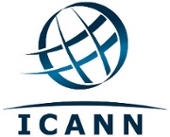On 27 June 2011, ICANN published a webpage that identifies available registrant rights and responsibilities. The Registrant Rights and Responsibilities document is posted on ICANN’s website at: http://www.icann.org/en/registrars/registrant-rights-responsibilities-en.htm.
This webpage was developed in consultation with registrars, and is primarily based on the “plain English” RAA which was also reviewed by a number of registrars in the Registrar Stakeholder’s Group last year. It only incorporates registrant rights and responsibilities that already exist under the 2009 RAA, and does not include any “aspirational” rights.
The registrants (domain holders) have rights and responsibilities that are set forth in separate ICANN policies and specifications. These rights are the obligations that the Registrars agree to follow.
Some of the Registrar obligations are dependent upon Registered Name Holders fulfilling certain responsibilities, particularly as it relates to payment of registration fees, submission of required data points to the Registrars, and submission of accurate data and timely updates to that required data.
Registrars also have specific items on which they must provide notice to Registered Name Holders, including notifications of the end of a registration term, use of Registered Name Holder’s Personal Data, and notices regarding escrowing of data for domain names registered through privacy or proxy registration services, as well as the posting of fees for the recovery of registered names.
Registrars are also required to have an interactive web page and port 43 Whois service that is available to the public to query free of charge.
In order to register a domain name, a Registered Name Holder (also known as a Registrant) has to use the services of an ICANN-accredited Registrar. Registered Name Holders are required to provide a Registrar with timely updates to Whois data for a Registered Name. In some instances, a registrant may choose to limit the amount of personal information that a Registrar makes available in a Whois query. Customers may also choose to register names through a proxy service, where the proxy service is the Registered Name Holder, and the proxy service licenses the use of the domain name to the customer.












